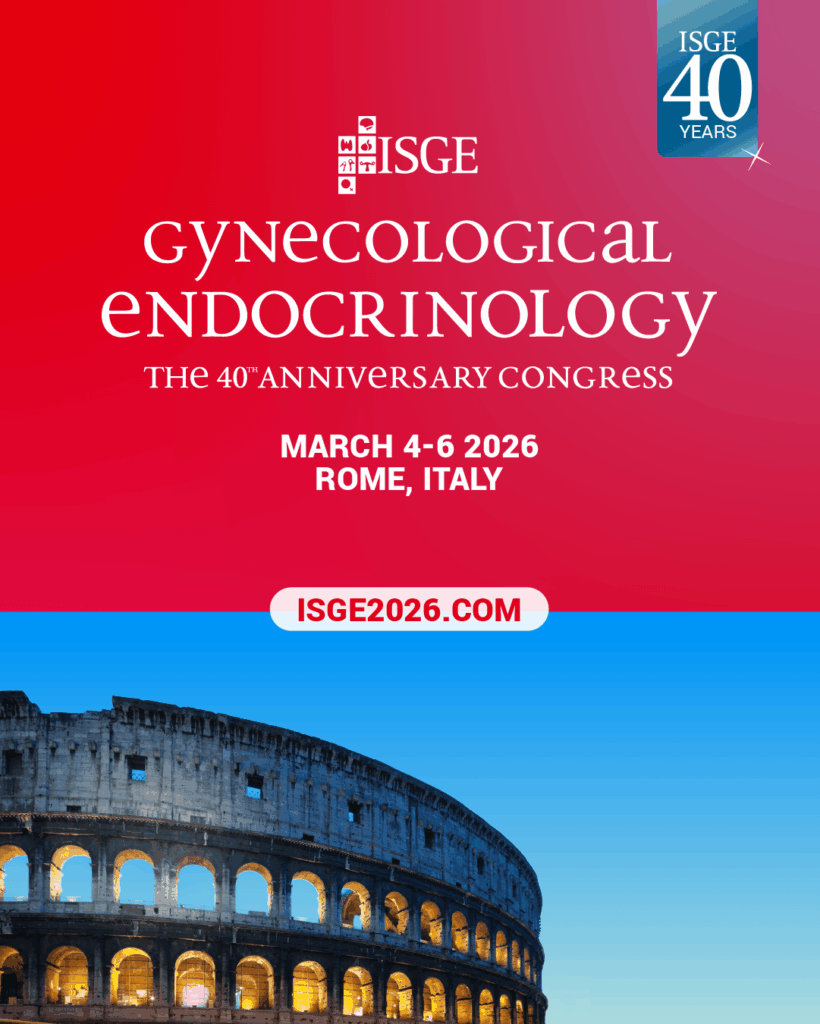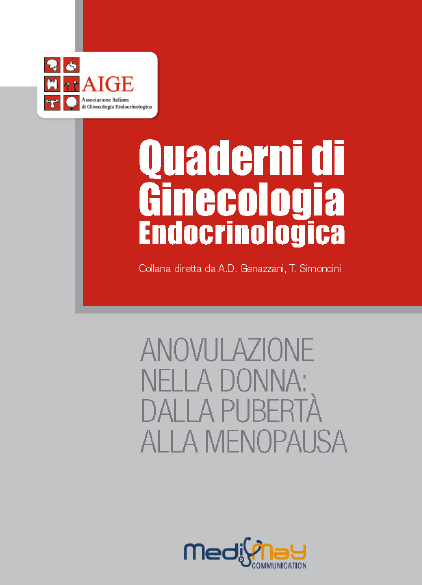-
Felice Petraglia, Daniela Hornung, Christian Seitz, Thomas Faustmann, Christoph Gerlinger, Stefano Luisi, Lucia Lazzeri, Thomas Strowitzki
Reduced pelvic pain in women with endometriosis: efficacy of long-dienogest treatment
Arch Gynecol Obstet (2012) 285:167–173Abstract
Purpose Purpose To investigate the eYcacy and safety of dienogest as a long-term treatment in endometriosis, with follow-up after treatment discontinuation. The study included women with endometriosis, who had previously completed a 12-week, placebo-controlled study of dienogest, who participated in an open-label extension study for up to 53 weeks. Thereafter, a patient subgroup was evaluated in a 24-week follow-up after treatment discontinuation.
Methods A multicenter study performed in Germany, Italy and Ukraine. Women with endometriosis were enrolled at completion of the placebo-controlled study (n = 168). All women received dienogest (2 mg once daily, orally) and changes in pelvic pain (on a visual analog scale), bleeding pattern, adverse events and laboratory parameters were evaluated during and after treatment.
Results Results The completion rate among women who entered the open-label extension study was 90.5% (n = 152). A significant decrease in pelvic pain was shown during continued dienogest treatment (P < 0.001). The mean frequency and intensity of bleeding progressively decreased. Adverse events, rated generally mild or moderate, led to withdrawal in four patients (2.4%). No clinically relevant changes in laboratory parameters were observed. During treatment free follow-up (n = 34), the reduction in pelvic pain persisted, while bleeding frequency and intensity returned to normal patterns.
Conclusion Long-term dienogest showed a favorable eYcacy and safety proWle, with progressive decreases in pain and bleeding irregularities during continued treatment; the decrease of pelvic pain persisted for at least 24 weeks after treatment cessation. -
Bijay Vaidya, Alicja Hubalewska-Dydejczyk, Peter Laurberg, Roberto Negro, Francesco Vermiglio, Kris Poppe
Treatment and screening of hypothyroidism in pregnancy: results of a European survey
European Journal of Endocrinology (2012) 166 49–54Abstract
Introduction Maternal hypothyroidism in pregnancy is associated with several adverse outcomes. The Endocrine Society Guidelines for the management of thyroid diseases in pregnancy were published in 2007; however, impact of the guidelines in routine clinical practice is unknown. Therefore, we have carried out a survey of members of the European Thyroid Association (ETA) to study current practices relating to the management of hypothyroidism in pregnancy.
MethodsIn December 2010, we emailed an electronic questionnaire survey based on clinical case scenarios to 605 members of the ETA. Responses from 190 clinician members (from 28 European countries) were analyzed.
Results
For a pregnant woman with newly diagnosed overt hypothyroidism, most responders initiated a full dose of L-thyroxine (L-T4). For a woman with hypothyroidism planning pregnancy, 50% recommended increasing the dose of L-T4 as soon as pregnancy is confirmed, whilst 43% favored testing thyroid function before adjusting the dose. Responders used diverse combinations of tests to monitor the dose of L-T4. The target of thyroid function tests that responders aimed to achieve with L-T4 was also inconsistent. Forty-two percent responders or their institutions screened all pregnant women for thyroid dysfunction, 43% performed targeted screening of only the high-risk group, whilst 17% did not carry out systemic screening. Timing of the screening, tests used, and criteria for starting treatment and monitoring were variable.
Conclusion There is wide variation in the clinical practice relating to the treatment and screening of hypothyroidism during pregnancy in Europe. -
Anuja Dokras, Shari Clifton, Walter Futterweit, Robert Wild
Increased prevalence of anxiety symptoms in women with polycystic ovary syndrome: systematic review and meta-analysis
Fertil Steril 2012;97:225–30Abstract
Objective:To perform a systematic review and meta-analysis of studies that compared the prevalence of anxiety symptoms in women with polycystic ovary syndrome (PCOS) and control women.
Design: Meta-analysis and systematic review.
Setting: University practice.
Patient(s):Cross-sectional studies comparing PCOS subjects and geographically matched clearly defined non-PCOS control subjects with data on age and body mass index (BMI).
Intervention(s): Anxiety screening tool.
Main Outcome Measure(s): The primary analysis contrasted prevalence of anxiety. Cochrane Review Manager 5.0.24 software was used to construct forest plots comparing frequency of anxiety symptoms in case and control subjects.
Result(s): Of 613 screened articles, nine met our selection criteria for a systematic review and four were included in the meta-analysis. The prevalence of generalized anxiety symptoms was available in four studies and was significantly greater in PCOS subjects (42/206, 20.4%) compared to controls (8/204, 3.9%). The odds for anxiety symptoms were significantly greater in women with PCOS compared with control subjects (odds ratio 6.88, 95% confidence interval 2.5–18.9). The mean anxiety score was significantly increased in three of the remaining five studies. Other anxiety disorders, such as social phobia, panic attacks, and obsessive compulsive disorders, were assessed infrequently.
Conclusion(s): Our systematic review suggests an increased odds of anxiety symptoms in women with PCOS, underscoring the importance of screening all women with PCOS for anxiety symptoms. Follow-up evaluation and treatment are essential, because generalized anxiety disorder is a chronic condition. Potential contributors for anxiety symptoms, such as hirsutism, obesity, and/or infertility may be specific to women with PCOS but need further investigation. -
STEFANO LUISI, VALENTINA CIANI, AGNIESZKA PODFIGURNA-STOPA, LUCIA LAZZERI, FLAVIO DE PASCALIS, BLAZEJ MECZEKALSKI, FELICE PETRAGLIA
Serum anti-Mu¨ llerian hormone, inhibin B, and total inhibin levels in women with hypothalamic amenorrhea and anorexia nervosa
Gynecological Endocrinology, 2012; 28: 34–38Abstract
Objective: To evaluate whether neuroendocrine forms of secondary amenorrhea (hypothalamic nervosa (HA) and anorexia nervosa (AN)) affect serum anti-Mu¨ llerian hormone (AMH), inhibin B, and total inhibin levels.
Methods: Amenorrheic women (n = 82) (aged between 16 and 35 years old) according to diagnosed with neuroendocrine forms of amenorrhea: HA (n = 64), AN (n = 18), and healthy women (n = 41) (control group) were enrolled. Serum AMH, inhibin B, and total inhibin levels were measured by specific ELISA.
Results: No statistically significant difference of AMH serum levels between women with HA, AN, and control group was observed. Serum inhibin B and total inhibin levels in women with HA (p 5 0.0001), AN (p 5 0.05) resulted significantly lower than in control healthy women.
Conclusion(s): The present data showed that neuroendocrine forms of amenorrhea are associated with an impaired inhibin secretion while not AMH. These data indirectly support that AMH is an excellent marker of ovarian reserve and its secretion is not influenced by the hypothalamic-ovarian axis activity. -
P. Bouchard , N. Panay, T. J. de Villiers, P. Vincendon, W. Bao, R. J. Cheng, G. Constantine
Randomized placebo- and active-controlled study of desvenlafaxine for menopausal vasomotor symptoms
CLIMACTERIC 2012;15:12–20Abstract
Objective To evaluate the effi cacy and safety of desvenlafaxine (administered as desvenlafaxine succinate) vs. tibolone and placebo for menopausal vasomotor symptoms and the incidence of uterine bleeding.
Methods This 12-week, double-blind, randomized, controlled trial was conducted at 35 sites in Europe, two sites in South Africa, and one site in Mexico. Postmenopausal women with _ _ 50 moderate or severe hot flushes per week ( n _ 485) were randomized to desvenlafaxine 100 mg/day, tibolone 2.5 mg/day, or placebo. Reduction in the average daily number of moderate and severe hot fl ushes at weeks 4 and 12 (primary endpoint) was evaluated using analysis of covariance. Safety assessments included incidence of uterine bleeding, adverse events, laboratory values, and vital signs.
Results At week 12, no statistically signifi cant difference was observed in reduction of the average daily number of moderate and severe hot fl ushes for desvenlafaxine (-5.78) vs. placebo ( – 5.82; p = 0.921), although time to 50% reduction was signifi cantly less than placebo (13 vs. 26 days, p < 0.006). Hot flush reduction with tibolone (-8.21) was signifi cantly greater than placebo ( p<_ 0.001). Nausea was the most common adverse event with desvenlafaxine, was generally mild to moderate, and resolved within the fi rst 2 weeks. Signifi cantly more subjects experienced bleeding with tibolone (23%) vs. desvenlafaxine (12%; p < 0.024) or placebo (9%; p < 0.001).
Conclusions Desvenlafaxine did not separate from placebo in reducing the number of moderate to severe hot flushes at week 12, although it did allow women to achieve 50% reduction sooner than placebo. Tibolone did separate from placebo, but with smaller than expected effect. The placebo effect was high (57%). Adverse drug reactions were consistent with the known safety profi le of desvenlafaxine, and significantly more women who received tibolone experienced episodes of bleeding compared with women who received desvenlafaxine or placebo. -
Arthur Hartz, Tao He, Alfred Rimm
Comparison of Adiposity Measures as Risk Factors in Postmenopausal Women
J Clin Endocrinol Metab 97: 227–233, 2012Abstract
Context: There is a continuing debate about which adiposity measure is the best risk factor.
Objectives: This study compared the associations of 14 health outcomes with combinations of four adiposity measures: body mass index (BMI), waist to hip ratio (WHR), waist, and waist to height ratio.
Design: Data were from the Women’s Health Initiative, a prospective study of women enrolled from 1993–1998 with a median follow-up time of 8 yr. Regression models were used to test the association of adiposity measures with outcome after adjusting for a number of variables related to demographic characteristics and health behavior.
Setting: The women were recruited from 40 clinical centers throughout the United States.
Participants: The sample analyzed included 141,652 postmenopausal women age 50–79 yr who met the criteria for the Women’s Health Initiative randomized control trials.
Main Outcome Measures: Outcomes included death and eight medical conditions.
Results: Adiposity measures were most strongly associated with diabetes, hypertension, joint replacement, and gallbladder disease; moderately associated with myocardial infarction, endometrial cancer, and death; and least strongly associated with colon cancer, stroke, and breast cancer. Associations were nearly identical for waist and waist to height ratio. For most outcomes, waist was a stronger individual risk factor than BMI or WHR. However, BMI and WHR were the most useful combination of adiposity measures for stratifying participants according to risk of hypertension or diabetes.
Conclusions: The adiposity measure most useful for stratifying persons on the basis of risk depends on the outcome of interest. When the outcome is diabetes or hypertension in postmenopausal women, the best indication of risk is a combination BMI and WHR. -
Marie-Christine Lafay Pillet, Aude Schneider, Bruno Borghese, Pietro Santulli, Carlos Souza, Isabelle Streuli, Dominique de Ziegler, Charles Chapron
Deep infiltrating endometriosis is associated with markedly lower body mass index: a 476 case–control study
Hum. Reprod. (2012) 27(1): 265-272Abstract
BACKGROUND An inverse association between BMI and endometriosis has been reported but remains controversial. We decided to evaluate the association between BMI and the different types of endometriosis, classified as superficial endometriosis (SUP), deep infiltrating endometriosis (DIE) and ovarian endometrioma (OMA).
METHODS From a prospective database of patients who underwent gynecological surgery between February 2005 and October 2008, we compared 238 patients with a histological diagnosis of endometriosis to 238 age- and smoking-status-matched controls using a prospective preoperative questionnaire and surgical data. Numerical variables means were compared for matched pairs, and non-parametric variables using Wilcoxon test. The Odds ratios for all types of endometriosis adjusted for confounding variables were computed according to predefined BMI groups [1(<18.5), 2 (≥18.5 and <22), 3(≥22 and <25), 4(≥25)], taking Group 3 as the reference population.
RESULTS BMI was significantly lower for all 238 patients (21.70 ± 3.7 versus 23.29 ± 4.1, P < 0.001), for 101 OMA patients (21.88 ± 3.8 versus 22.99 ± 4, P < 0.038), and for 97 DIE patients (21.35 ± 3.4 versus 23.35 ± 3.8, P < 0.001) compared with their own controls, but not for the 40 SUP patients. Patients in Group 1 had adjusted odds ratios as high as 3.3 [95% confidence interval (CI): 1.6–6.8] for DIE and 2.7 (95% CI: 1.1–6.8) for OMA; in Group 2, the adjusted oddd ratios were 2.6 (95% CI: 1.3–5.5) for DIE and 2.9 (95% CI: 1.5–5.4) for OMA.
CONCLUSIONS Endometriotic patients have lower BMI than age- and smoking-status-matched controls, independent of confounding variables. Patients with the lowest BMI (<18.5) are at a high risk of DIE.
-
E. Anne MacGregor
Perimenopausal migraine in women with vasomotor symptoms
Maturitas 71 (2012) 79– 82Abstract
Migraine is affected by fluctuating estrogen levels so it is not surprising that the perimenopause is a time of peak rate of change of migraine prevalence in women. Evidence supports estrogen ‘withdrawal’ as one of the important triggers of menstrual attacks of migraine without aura, while high levels are associated with migraine aura. This mini review addresses the issues of diagnosing migraine, treating the symptoms of migraine, and controlling co-morbid migraine and hot flushes with hormonal and non-hormonal options.
Maintaining a stable estrogen environment is the most effective treatment for vasomotor symptoms and can also benefit estrogen-withdrawal migraine. Using only the lowest doses necessary to control symptoms minimizes the risk of unwanted side effects. Non-hormonal options for both conditions are limited but there is evidence of efficacy for fluoxetine and venflaxine, with less evidence for gabapentin.
Letteratura scientifica selezionata
-
Felice Petraglia, Daniela Hornung, Christian Seitz, Thomas Faustmann, Christoph Gerlinger, Stefano Luisi, Lucia Lazzeri, Thomas Strowitzki
Reduced pelvic pain in women with endometriosis: efficacy of long-dienogest treatment
Arch Gynecol Obstet (2012) 285:167–173 -
Bijay Vaidya, Alicja Hubalewska-Dydejczyk, Peter Laurberg, Roberto Negro, Francesco Vermiglio, Kris Poppe
Treatment and screening of hypothyroidism in pregnancy: results of a European survey
European Journal of Endocrinology (2012) 166 49–54 -
Anuja Dokras, Shari Clifton, Walter Futterweit, Robert Wild
Increased prevalence of anxiety symptoms in women with polycystic ovary syndrome: systematic review and meta-analysis
Fertil Steril 2012;97:225–30 -
STEFANO LUISI, VALENTINA CIANI, AGNIESZKA PODFIGURNA-STOPA, LUCIA LAZZERI, FLAVIO DE PASCALIS, BLAZEJ MECZEKALSKI, FELICE PETRAGLIA
Serum anti-Mu¨ llerian hormone, inhibin B, and total inhibin levels in women with hypothalamic amenorrhea and anorexia nervosa
Gynecological Endocrinology, 2012; 28: 34–38 -
P. Bouchard , N. Panay, T. J. de Villiers, P. Vincendon, W. Bao, R. J. Cheng, G. Constantine
Randomized placebo- and active-controlled study of desvenlafaxine for menopausal vasomotor symptoms
CLIMACTERIC 2012;15:12–20 -
Arthur Hartz, Tao He, Alfred Rimm
Comparison of Adiposity Measures as Risk Factors in Postmenopausal Women
J Clin Endocrinol Metab 97: 227–233, 2012 -
Marie-Christine Lafay Pillet, Aude Schneider, Bruno Borghese, Pietro Santulli, Carlos Souza, Isabelle Streuli, Dominique de Ziegler, Charles Chapron
Deep infiltrating endometriosis is associated with markedly lower body mass index: a 476 case–control study
Hum. Reprod. (2012) 27(1): 265-272 -
E. Anne MacGregor
Perimenopausal migraine in women with vasomotor symptoms
Maturitas 71 (2012) 79– 82






